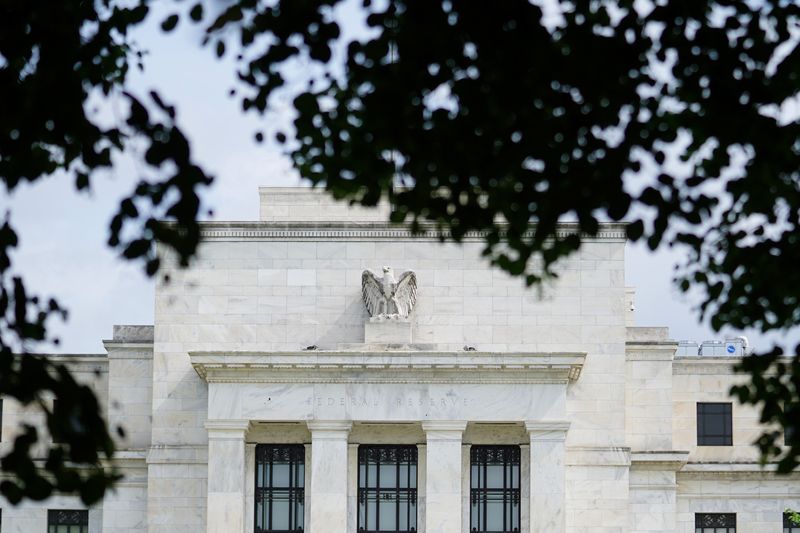Investing.com’s stocks of the week
(Reuters) - The Federal Reserve will conclude its latest two-day policy meeting on Wednesday, and while it is expected to maintain its policy rate in the current 5.25%-5.50% range, data on inflation, jobs and consumer spending is bringing the prospects of rate cuts into focus for later this year.
Here is a guide to some of the numbers shaping the policy debate:
JOB OPENINGS (Released Jan. 30; next release March 6):
Fed Chair Jerome Powell keeps a close eye on the U.S. Labor Department's Job Openings and Labor Turnover Survey (JOLTS) for information on the imbalance between labor supply and demand, and particularly on the number of job openings for each person who is without a job but looking for one. The ratio had been falling steadily towards its pre-pandemic level, but has risen in the last two months and remains above 1.4-to-1, higher than the 1.2-to-1 level seen before the health crisis. Other aspects of the survey, like the quits rate, have edged back to pre-pandemic levels.
INFLATION (PCE released Jan. 26; next release CPI Feb. 13)
The personal consumption expenditures (PCE) price index, by which the Fed measures inflation, rose 0.2% in December from the prior month, in line with economists expectations' and translating to an annualized pace in keeping with the Fed's 2% target.
On a three-month and six-month annualized basis, underlying core PCE inflation excluding food and energy prices is running below target, the data showed, and from a year ago the increase was 2.9%, the smallest rise since March 2021.
Meanwhile, a report earlier this month showed the consumer price index (CPI) jumped 3.4% on a year-on-year basis in December from 3.1% in the prior month, while the core rate edged down to 3.9% from 4.0%, stronger-than-expected readings that underscored the bumpy path back to the Fed's target.
Fed officials will look to annual revisions on the CPI due to be released on Feb. 11 for further clues on the path of inflation; revisions last year undid what had looked like progress seen until that point.
RETAIL SALES (Released Jan. 17; next release Feb. 15):
Retail sales rose 0.6% in December, yet another in what has been a string of "upside surprises" the economy delivered over the course of 2023. The surge in spending foreshadowed the far-stronger-than-expected 3.3% estimate for annualized fourth-quarter GDP growth released on Jan. 25. Fed policymakers have been anticipating signs the aggressive rate hikes they delivered from March 2022 to July 2023 are trimming overall demand for goods and services, but that progress has been hard to detect.
EMPLOYMENT (Released Jan. 5, next release Feb. 2):
The economy created 216,000 jobs in December, beating economists' expectations and up from 173,000 in the prior month, although there were some signs of a gradual slowdown.
The unemployment rate remained unchanged at 3.7%, but that was due to 676,000 people leaving the labor force, almost erasing the gains in participation since February. Household employment fell sharply and the workweek was on average slightly shorter than in November.
The employment report also included the tally for last year's job gains. The economy added 2.7 million jobs in 2023, a sharp drop from the 4.8 million positions created in 2022.
Overall, the latest report remains consistent with the Fed's view of an economy that can continue growing while inflation also ebbs.
The pace of annual wage growth, however, picked up to 4.1% from 4.0%, higher than many Fed officials feel is consistent with price stability.
Wage growth is still well above its pre-pandemic average and the 3.0%-3.5% range that most policymakers view as consistent with the Fed's 2% inflation target.
